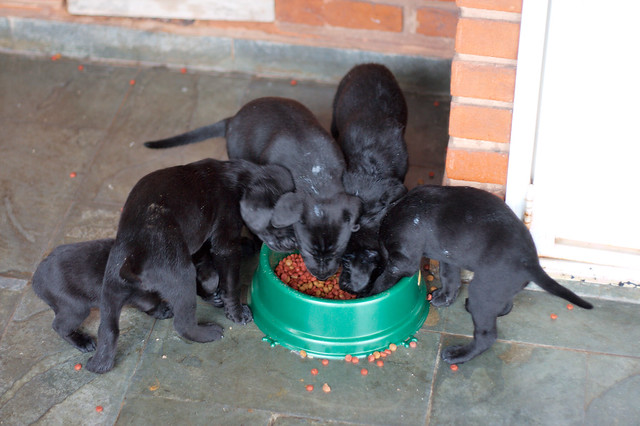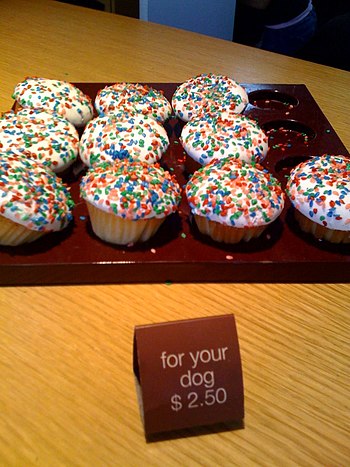 |
| (Photo credit: Wikipedia) |
After blood work and a physical examination, the veterinarian said that Muffy had developed type-two canine diabetes. After a brief discussion, we decided to try and regulate her blood sugar level with diet modification and insulin twice daily.
At first, it was rough going. Weekly checkups revealed Muffy's sugar levels continued to bounce from one extreme to the other. Determined not give up, I monitored her urine samples at home for sugar content and adjusted insulin injections as necessary. Gradually, we began to see improvement.
After just a few months Muffy was once again her frisky self. You would never know by watching her race about that she had a serious health problem. A special diet, proper amounts of insulin and regular exercise have worked together with Muffy's routine veterinary care to turn the tide. As a result, I can look forward to many more happy years with my little dog.
Wyoming veterinarian Mary Flitner, who recently moved her practice to New Mexico, received her D.V.M. degree at Colorado State University and an award for excellence in large animal surgery in 1997. Flitner states that diabetes in dogs and cats is more common than most people realize. According to Flitner, a pet's chance of developing diabetes will increase with age.
"This is especially true in overweight, less active dogs."
Besides weight and age, diet is another significant factor. Dogs given table scraps without discrimination are, particularly at risk. The importance of diet cannot be overemphasized, warns Flitner.
"A high fiber diet, low in fat and sugar, is vital. And an annual checkup by a qualified professional is also an important part of proper pet care, as early detection of health complications increase successful management of the problem and helps prolong the quality of life for that pet."
Flitner notes many pet owners mistakenly feel caring for a diabetic pet would be too difficult for them, an assumption that complicates the decision making the process at a critical time.
"A diagnosis of diabetes in a family pet is hard enough to handle without misconceptions compounding the problem," said Flitner thoughtfully.
For instance, a pet owner might opt to euthanize a pet diagnosed with diabetes because they feel incapable of managing the problem. However, with proper instruction and guidance, that same pet owner could gain the confidence necessary to properly follow the care plan developed by the veterinarian, and enjoy many more quality years together with their pet.
"People need to know by regulating their pet's diabetes, that pet can still live to their full potential," said Flitner, acknowledging most caregivers consider their pet an important part the family and struggle to make right health care decisions for them.
Flitner notes grocery store quality pet foods are not good choices for diabetic pets because of added fillers and sugars used to improve the taste.
"Some grocery store brands of cat food actually have trace elements of antifreeze in them, because cats are attracted to it. These type foods often have a high content of sodium, which is also unhealthy for the pet.
"A healthy well-balanced diet is important for any pet, but especially for those diagnosed with diabetes."
Early warning signs that might indicate diabetes in your pet include: an unusually high consumption of water, increase in appetite, incontinence, lethargy, extreme changes in eyes (i.e. cataracts), lack of coordination, and vomiting. Caregivers who note such changes in their dog should promptly call a qualified professional because examination by a veterinarian is important and necessary for proper diagnosis.
Flitner also acknowledges the temptation to remove the water bowl from the pet's reach if incontinence is a problem.
"But, this is not the correct thing to do," instructs Flitner.
In the case of diabetic canines, drinking large amounts of water is the dog's attempt to flush glucose out of the kidneys which have spilled over from the blood. If the glucose doesn't get flushed out, serious damage to the kidneys and other organs can develop.
The best preventative measures against serious health problems in the family pet remain simple and practical: regular veterinary check-ups and a healthy diet. Exercise is also very important. Among other benefits, exercise helps increase the body's effective use of insulin
© Lori S. Anton
Savvy Pet Editor

















